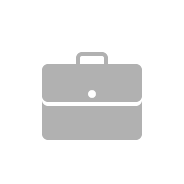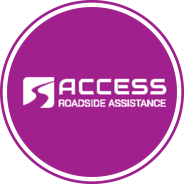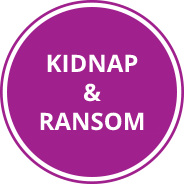![]()
We are a full line Insurance Brokerage, with access to many of Canada’s top insurance markets

We have licenced brokers and motor licence issuers

We work hard and are ready to provide you with great service and advice

We are a family owned brokerage
What our customers say about us
“From day one, Steve has always been upstanding in his efforts to not only look after people but establish a relationship which is the cornerstone of “Customers For Life.”
“It has been a year since we came to you for our insurance [church, club, & now house]. We must say it has been a pleasure, not only that you have saved us $ 3000.00 on the same insurance, you also explain to us what is the best programs for us. Thank you for being honest & looking after our best interest & being on the top of any changes that can benefit us.”
“I have been dealing with Hordos Insurance Brokers Inc., since they opened in Regina Beach. Stephen & Steve have been excellent to deal with. They look after my insurance requirements like family. They are easy to deal with, pleasant and knowledgable. I would recommend them highly for any of your insurance needs.”
“Steve really cares about the individual and has a unique personality. He not only saved me hundreds of dollars, but got me additional coverage. I would highly recommend his company to everyone. Steve has become a close friend and is always popping in to see how things are going. Thanks for all your support and kindness, it is greatly appreciated.”
“Thank you for the thorough review of our insurance coverage. We especially appreciate your recommendation to increase the value of our manufacturing equipment, and the very reasonable rate to increase the coverage. We are confident our recent insurance changes and renewal is adequate protection for our business.”
“Steve brought Cyber & Privacy Liability and Legal Expense Insurance to my attention when he recently quoted my business insurance package. When he introduced these new coverages to me, he also filled several gaps in my coverage, none offered to me by my previous Broker. Besides providing me with significantly more coverage for the same premium as I paid prior, the minimal additional costs for both the Cyber & Privacy Liability and the Legal Expense Insurance products has not only given me additional peace of mind but it has rounded out my business insurance program.”
“I’ve known Steve Hordos, the owner of HiBi for many, many years and have come to trust him for professional, friendly advice and exceptional service. HiBi is an independent Father & Son brokerage, not owned by any banks, credit unions, or large corporations, that have employees assigned to look after you today, and then gone tomorrow. For these reasons we are confident that HiBi will find you the best possible coverage for the best possible price, and they will be here long into the future to look after you.”
“I know Steve as an individual dedicated to his industry, to providing excellent customer service and to being honest. I can highly recommend him to look after your insurance needs.”
“Prior to our 2014 Coors Unclassic Golf Tournament, we approached Hordos Insurance Brokers to quote on our Hole In One Prize Indemnity coverage. They searched over a dozen companies for coverage and price and came up with a company that provided us DOUBLE the coverage we had previously and SAVED us 10% in premium. They even helped us produce an invoice from our tournament to our sponsors. For a GREAT Policy, GREAT Price and GREAT Service, save yourself time and money and see Hordos Insurance Brokers for your Hole In One Prize Indemnity Insurance.”
“I would highly recommend Hordos Insurance Brokers for both Classic Car and Farm insurance. Steve was professional, thorough and diligent to find us the best company for our farm insurance. We chose Hagerty Collector Car Insurance to cover our restored 1970 Barracuda as it gave us excellent coverage for a reasonable premium.”
“Hordos Insurance has been the Saskatchewan Sports Hall of Fame’s (SSHF) broker since 2011. During that time, they have proven themselves to be very understanding of, and supportive to, the not-for-profit industry. Steve and Stephen Hordos work tirelessly to ensure that the SSHF gets the specific coverage that we want and need; advocating strongly on our behalf to ensure that we are getting the best coverage and price point possible. On task and attentive to detail characterizes the Hordos team. The SSHF has no doubt they will have our back should we ever need to make a claim.”
“Over the past many years we have felt our insurance premiums were getting out of hand. Despite supposedly having claims free discounts and association discounts, we still felt we were paying too much. We also didn’t know if we were over insured or under insured on things. We also had our insurance policies with different insurance offices. So we decided to take a holistic review of all our house, vehicles, cottage and specialty insurance.
We turned to Hordos Insurance that is a local insurance broker that we hadn’t used previously. They did a very thorough review. They not only found areas where we were over insured, and under insured, they also helped us significantly decrease our premiums. Throughout the process, they were professional, responsive and great to work with.
We are very pleased with our experience and only wish we would have done it sooner.”
Steve and Stephen Hordos have given us great service for our insurance needs. They also saved us a good amount of money with their knowledgeable advice. Good friendly people that are a pleasure to do business with. Highly recommended. Happy 10th anniversary!
We value your privacy. We will use the information you have provided to provide us with a response. We will protect your information and report to you immediately, in case of a breach. We will not sell or divulge any information to any other party. If you have questions about any of this, please direct them to Hordos Insurance Brokers Inc.
Proudly Serving Western Canada Since 2009
OUR HOURS
Monday – 9am-5pm
Tuesday – 9am-5pm
Wednesday – 9am-5pm
Thursday – 9am-5pm
Friday – 9am-5pm
Saturday – 10am-2pm
Please call for appointments after 5pm.
CONTACT US
405 Centre St. Regina Beach, SK
(306) 729-3522
OUR ADDRESS
405 Centre Street
Regina Beach, SK
S0G 4C0








